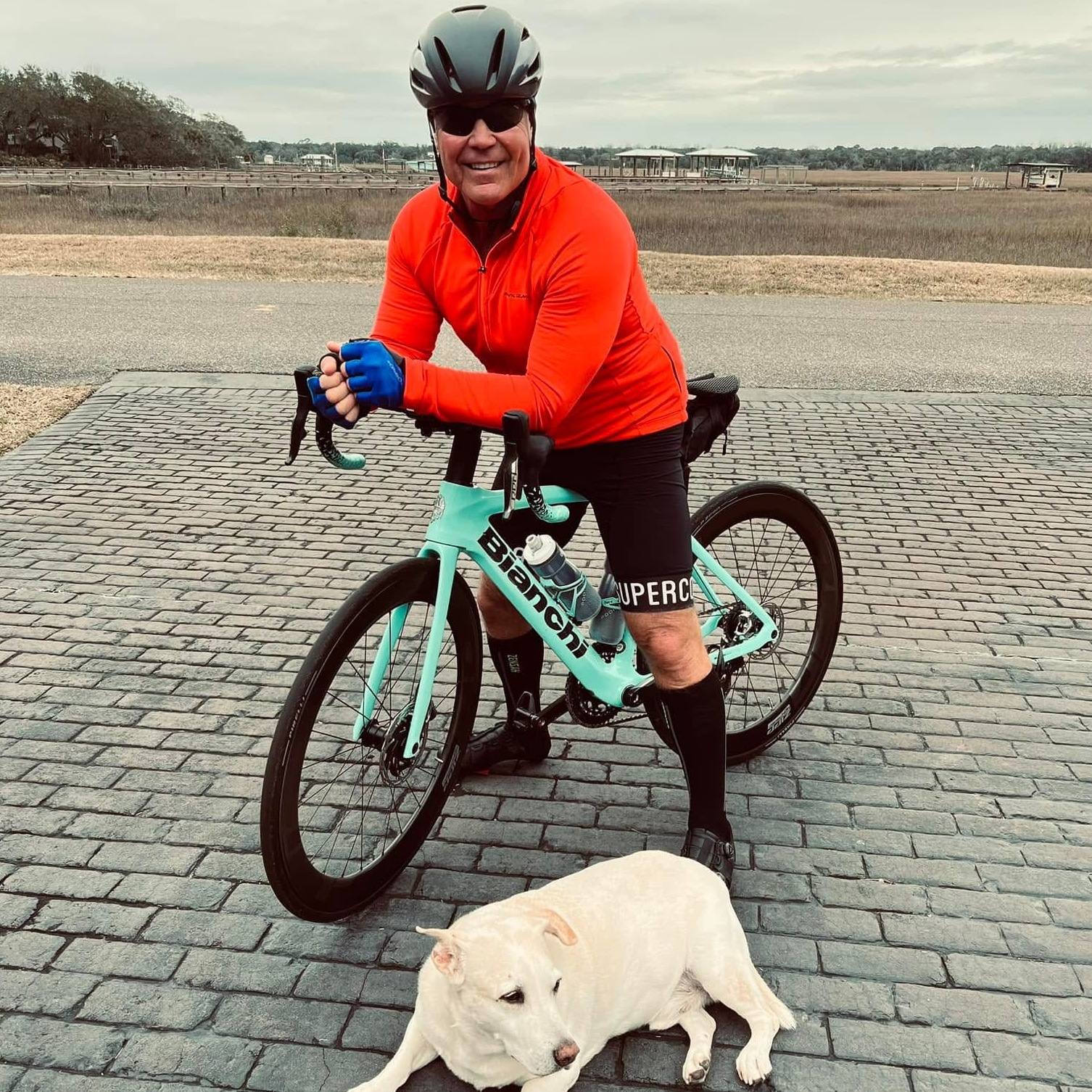This article was submitted by Mayo Clinic Jacksonville patient, Fred Page
In late summer 2005, after 50 days in a non-Florida hospital, a nurse helped me out of the wheelchair and into my wife’s waiting vehicle. We were going home! Our battle waged with the deadly bacteria pseudomonas had ended. However, a weight loss of nearly 30 pounds, a badly scarred torso and neck, along with a feeding tube, sporadic periods of aspirations and a paralyzed vocal cord clearly reminded us that the overall battle was only changing locations.
 After a brief while at home, we began to better understand where we had been and where we were then. The extended hospital stay had been laced with life-saving circumstances and events. These included, among others, recovery from a code and having two liters of infection surgically removed from my chest cavity. Although considerable healing had taken place, significant medical needs continued including additional hospital admissions and surgeries to treat the ravages of the battle with infection. These challenges were exceedingly difficult for me and for my family.
After a brief while at home, we began to better understand where we had been and where we were then. The extended hospital stay had been laced with life-saving circumstances and events. These included, among others, recovery from a code and having two liters of infection surgically removed from my chest cavity. Although considerable healing had taken place, significant medical needs continued including additional hospital admissions and surgeries to treat the ravages of the battle with infection. These challenges were exceedingly difficult for me and for my family.
A very important conversation took place in the summer of 2006 with my attending gastroenterologist. At that time, he shared with us that he believed my needs could best be served in another setting. He went on to say that, with our approval, he would refer me to Dr. Michael Wallace of Mayo Clinic in Jacksonville, Florida.
Mayo’s reputation made our decision an easy one. However, we had no idea of the far reaching, dramatic quality of life difference that would be a part of this new relationship and journey.
It’s interesting to access a facility whose significant reputation precedes the initial visit. Prior to making our first trip, expectations for the enactment of Mayo were exceptionally high. Glimpses of the experience began to be revealed before arriving on campus. A phone call and receipt of mailed information were the catalysts for first impressions. Thorough, patient focused, and attentive were some of the obvious descriptors. The consistency of these very influential factors was amazing.
Prior to my first appointment with Dr. Wallace, I received a secondary introduction to him via the Mayo Web site. My reaction was, “How is it possible to be a part of such an extensive array of research projects and publications?” Even before reaching the campus, then, I already knew of my exceedingly good fortune to be under the care of a physician whose interests and activities are so far reaching.
Driving on to the campus for the first time was particularly interesting. Landscape and its maintenance raised a question. If this kind of immaculate care is given the esthetics, what is patient care like? Although, as an afterthought, I believe that presentation of the total facility is a part of patient care.
During our first conversation on Sixth Floor East, beyond the shadow of a doubt, I knew that Dr. Wallace had poured over my records and had spent considerable time in conversation with the referring physician. Before he and I even spoke, he had established a very significant database from which to structure questions and had initiated the formulation of a team of physicians to be a part of the evaluation process. His level of readiness far exceeded any that I had experienced in any area of life.
Being part of a team evaluation was interesting. It was obvious in meeting with each physician that considerable information from Dr. Wallace had preceded my visit with these physicians. It is worthy of mention, too, that the team approach is not unique to the first visit. On more than one occasion since that time, I have been through the multi-physician evaluation process. As we completed our initial interviews, I knew that under Dr. Wallace’s guidance this would be a privileged medical journey. In the nearly three years hence, we recognize even more that only at Mayo could the gains have been made that we have experienced.
Reality. The initial post-esophageal dilatation consultation was especially informative. In that setting, current esophageal conditions were established along with a plan for treatment. It was a time to clarify that the condition of my throat was not repairable. The impact of that thought, however, was non-influential as Dr. Wallace presented a plan to allow me to comfortably, though cautiously, eat solid food, a big change from recent weeks which had presented great swallowing difficulties.
Initially, esophageal dilatations were at two week intervals. What a difference they made. Dr. Wallace reminded us that a goal was to distance the time between dilatations. I don’t think that Christie, my wife, and I had a timeline in mind for the amount of time between upcoming procedures; we were just so grateful for the great influence they made in my ability to swallow solid foods. However, I am confident that we had no idea that the foreseeable future would result in twelve week intervals which is the difference between my last and most recent procedures. Ultimately, what can these timeframes be? We don’t really talk about that. We are too busy planning and preparing meals that our entire family can enjoy.
Dr. Wallace is an extraordinary listener. Having been in many consultations with him, I believe that, conversationally, he hits the save key much more often than the delete key. Anecdotal information from our conversations resurfaces periodically in making a point or in determining direction.
His knowledge base is kaleidoscopic. The countless resources that are at his disposal keep my progress in maximum territory. How assuring it is to know that your physician is not only incredibly current but is often preceding the curve.
In this journey, our family has learned that Mayo does not only do things for and to patients. Certainly, good outcomes are realized from treatment on campus. However, through discussions and modeling, a partnership can be developed for continuing treatment beyond the on-site visit. This thought became abundantly clear to me as Dr.Wallace worked with me on steps to manage recovery and preventive strategies for laryngospasms. Prior to the management structure, these physically impairing events were generating considerable difficulty. However, a good understanding of my partnering responsibility established a much improved reduction in the degree and duration of the spasms.
Much of this presentation has focused on my primary physician at Mayo. However, isn’t that the very cornerstone of Mayo’s service and reputation — exceptional physicians along with a multi-talented support staff?
Related Diseases
Related Treatments
Related Departments
Related Articles



















